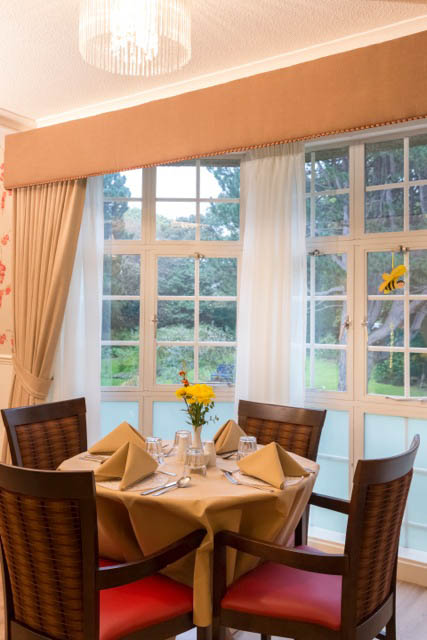How to Choose a Care Home in 2026

When someone you care about may need residential support, your heart and head both come into play in this big decision . Families often juggle emotional ups and downs for older people, from concerns about safety to hopes for companionship to the worry of letting go. It’s natural to feel mixed emotions—relief, anxiety, love, and sometimes guilt, as you work to do the best for your loved one.
Quality, professional care is key, but so is comfort, and a good care home allows your family member to maintain dignity, meet their dietary needs, stay connected with their interests and community, and feel safe and understood day to day. It’s the small things, warm welcomes at the door, gentle staff who listen, inviting lounges, and accessible gardens, that turn daily living into meaningful living.
Location matters too. Choosing a home close to familiar places or family means visits are easier and more frequent. Being able to pop in for a chat, join for lunch, or take part in activities alongside your loved one helps keep family ties strong and ensures this big transition feels more gentle. You’re not just searching for care, but for peace of mind and the reassurance that staff are welcoming and attentive, residents are comfortable and busy with life, and you can stay involved in big and small moments.
As you explore care home options, consider practical needs and emotional wellbeing together. Visit homes, ask questions, listen to your impressions and trust that your instinct is as vital as any checklist. Gathering facts, including a financial assessment, is important, but so is following your heart.
Top Tips for Starting Your Care Home Search
Beginning to look for a care home can feel overwhelming, but breaking the process into manageable steps makes it far more reassuring for everyone involved. The very first thing to think about is location. Consider local care homes near family, friends, or familiar places, as this helps your loved one keep social connections lively and makes regular visits easier. Search for care homes in your preferred area using trusted directories such as carehome.co.uk, Care UK, or social care referral platforms like TrustedCare.
Budget matters, too. Knowing what you can afford is essential, as care fees vary greatly between homes and regions. If you’re self-funding, you may find more options, but it’s also wise to speak with your local council’s adult social care team, they can offer helpful advice and may support you in finding homes that meet government standards and suit your budget. Remember to factor in not only the obvious costs, but any additional fees for outings, therapies, or extras your loved one might enjoy.
Next, focus on care needs. Every individual’s requirements are different, and a thorough care needs assessment reveals that some may simply need a little daily help, while others may require specialist dementia, nursing, or respite care. Look for homes that match your loved one’s needs now, and bear in mind how those needs might change in the future. Explore facilities, activities, and the kinds of support staff offer—these make a real difference in everyday quality of life.
Availability is another key factor. Care home waiting lists can be long in some areas, so enquire about current vacancies early. Ask care homes directly, or use online search filters to find homes with rooms available right now. If your timetable is tight, care help teams or referral advisers can suggest suitable homes quickly and even arrange visits for you.
Understanding Types of Care Homes
In the UK, care homes generally offer different types of care: residential, nursing, dementia, respite ans palliative care. Residential care provides personal care like help with washing, dressing, taking medication, and enjoying daily activities. These settings suit older adults who need gentle daily support, social connection, and a safe environment.
Nursing and dementia homes build on this support by offering 24-hour care from qualified nursing staff. If your family member has more complex medical or health needs, perhaps following an illness or due to a long-term condition, a nursing home ensures skilled staff are always nearby. Some homes blend the two, so residents can receive personal care and nursing support as their needs change, reducing the stress of moving later on. For those planning ahead, some homes even provide end-of-life care in warm, dignified surroundings, focusing on comfort, individual wishes, and family involvement. Choosing a home with the right mix of care will help everyone feel confidently supported, now and in the future.


Working Out Your Budget
Understanding the financial side of care homes is key to making the best choice for your family. In the UK, care home fees vary considerably depending on the type of care, location, and the home's facilities. Location plays a big part in pricing. For example, care homes in London and the South East generally cost more than those in the North East or Wales. Before you begin your search, it’s helpful to get a realistic sense of what care fees look like in your area. Don’t forget to consider additional costs that might arise, such as hairdressing, physiotherapy, or social outings, which may be charged separately by some homes.
If you or your loved one is partly or wholly funded by the local authority, there are thresholds for assets and savings they look at to decide how much funding help to provide. It’s a good idea to check with your local council’s social care team about what support is available and the assessment process. It can also be helpful to speak with a financial adviser experienced in care funding.
Budgeting with clarity means you can plan ahead confidently, knowing you’ve factored in all essential costs. This helps focus your search on homes that fit both your care needs and your financial comfort zone, reducing stress and uncertainty during an already challenging time.
Creating a Shortlist of Care Homes is an essential part of the care home choosing process.
Once you have a clearer idea of location, care needs, and budget, possibly with input from family or friends the next step is to create a shortlist of potential care homes. This helps focus your search and makes comparing options easier when you search online , saving you time and reducing overwhelm.
Start by using online care home directories that allow you to filter homes by key criteria such as location, types of care offered (residential, nursing, dementia), facilities, and current vacancies. Websites like carehome.co.uk and Lottie provide useful search filters and up-to-date information on thousands of UK care homes nationwide. These tools make it simple to narrow your choices and see which homes meet your essential requirements.
As you create your list, keep practical details in mind, such as distance from family, transportation links, the home's size, and any specialist services important to your loved one. Aim to shortlist around three to five homes to consider in detail, so you have manageable options to explore further with visits and conversations.
Reading Reviews and Feedback
One of the best ways to get a feel for a care home before visiting is to read reviews from residents, their families, and care professionals. But it’s important to understand what reviews can, and can’t, tell you, so you make the best choice with confidence. Start by looking for reviews that mention specific experiences rather than vague praise or complaints. Genuine reviews often give insights into daily life, staff kindness, responsiveness, activities, and the atmosphere. Pay attention to consistent patterns across multiple reviews—if several mention the same strengths or issues, they are likely to be real.
Don’t be swayed by one-off negative reviews or overly glowing comments. Emotionally charged complaints might reflect isolated incidents rather than the overall quality of care. Also, check the dates of reviews; older feedback might not reflect recent changes or improvements.
It’s very helpful to cross-check online reviews with official inspection reports from the Care Inspectorate in Scotland or the Care Quality Commission (CQC) in England. They regularly assess all UK care homes on areas like safety, staffing, care quality, and leadership, publishing detailed reports and ratings. These reports provide regulated, professional insights complementing personal reviews.
Also look out for how care homes respond to reviews. A home that acknowledges criticism and shows a willingness to improve demonstrates transparency and accountability, important qualities for providing great care. Remember, reading reviews is just one step. Visiting the care home, meeting staff and residents, and getting a direct sense of the environment will give you the clearest picture of whether a home feels right for your loved one.


Visiting and Touring Care Homes
Visiting care homes is one of the most important steps in your search. Whether you choose to book an in-person tour or opt for a virtual visit, getting a real feel for the environment, meeting the staff, and experiencing the atmosphere can help you understand if the home will be right for your loved one. During visits, spend time observing communal areas, gardens, and residents’ rooms if possible. Talk to staff and don’t hesitate to ask current residents or their families about their experiences—many are happy to share their stories and insights. These conversations often reveal the warmth and sense of community that photos and brochures cannot fully capture.
Many care homes participate in the annual Care Home Open Week, typically held in June each year. This national event invites families and the local community to visit care homes, join in activities, and learn more about the care and support provided. Attending Open Week events can be a great way to explore multiple homes, meet staff in a relaxed setting, and feel more connected to the care community. If you can’t make it during Open Week, ask care homes for brochures, detailed information on their services, and upcoming visit dates. Most homes are happy to arrange personalised visits and answer all your questions.
Key Questions to Ask
Preparing a checklist of questions before your visit can make these tours more focused and informative. Consider asking about:
The types of care offered and whether they match your loved one’s needs
Staff qualifications, training, and staffing levels during day and night shifts
Dietary options, cultural or religious meal considerations, and handling of allergies
Visiting policies and how family members can stay involved in daily life
What’s included in the fees and potential extra costs for additional services or activities
Opportunities for residents to participate in social, leisure, and therapeutic activities
How individual care plans are developed, reviewed, and tailored to each resident
Asking these questions helps families assess practicalities and gauge the home’s approach to person-centred care. Bring your checklist along to stay organised, and consider taking notes to compare homes later.
Trying Before Committing: Trial Stays in Care Homes
A trial stay, sometimes called respite care or short-term placement, lets your loved one experience daily life in a care home without immediately committing to a permanent move. These stays typically last from two to four weeks and provide families with valuable insight, helping ensure the chosen home truly meets medical, social, and emotional needs.
To arrange a trial stay, start by contacting the care home directly to discuss availability, length of stay, and any associated costs. Before admission, the care home will complete an assessment to tailor your loved one’s care plan, considering their health, mobility, and preferences. A trial stay gives your family time to observe the quality of care and if your loved one needs more care , staff-resident interactions, activities, and general atmosphere. It’s a vital opportunity to ask questions, meet key staff members, and ensure your loved one feels comfortable and safe.
Contracts, Vacancies, and Confirming Costs
Once you feel confident in your choice, request a copy of the care home’s contract or terms and conditions. Carefully review what is included in the fees, such as meals, accommodation, personal care, and activities, and clarify any extra charges you might face for services like hairdressing, physiotherapy, or trips. Check the home's current vacancy or waiting list status so you know when a place could be available. Staying in touch with the care home’s management team can smooth the transition and address any last questions or concerns.
Taking these practical steps in partnership with professional advice and your own observations ensures your loved one’s move into a care home is as comfortable and positive as possible.
Your Journey to the Right Care Home Starts Here
Choosing a care home is a deeply personal decision, balancing practical needs, the desire for your loved one to live independently, with emotional peace of mind. Through thoughtful research, visits, expert advice, and open conversations focused on supporting people , you can find a place where your loved one will feel safe, valued, and truly at home.
If you are looking for exceptional care in a warm, supportive community in Edinburgh, Colinton Care Home offers just that. Located beautiful landscaped grounds in Merchiston, Colinton is a purpose-built home providing residential, nursing, and also provide nursing care, dementia, respite, and palliative care tailored to individual needs. With fully refurbished ensuite rooms, inviting communal spaces, and an engaging range of activities, Colinton helps residents live fulfilling lives with dignity and joy.
At Colinton, you’ll find a team dedicated to person-centred care, where every resident is seen, heard, and supported. Our commitment to quality is reflected in excellent regulatory ratings and heartfelt testimonials from families. To explore what makes Colinton Care Home a special place to live and visit, or to arrange a personalised tour or trial stay, get in touch today.




